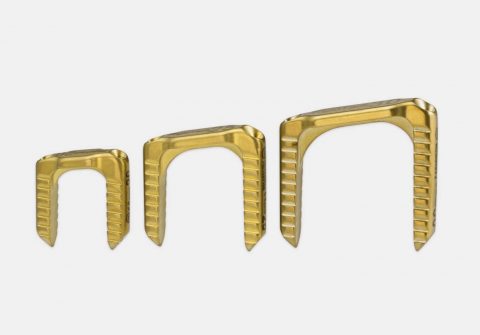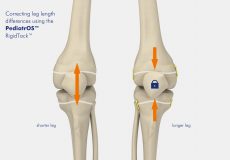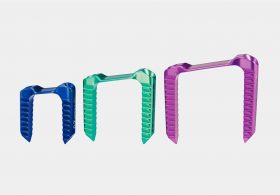PediatrOS™ RigidTack™
Compensation of leg length differences
Since their introduction in 2015, PediatrOS™ RigidTack™ Epiphysiodesis Implants have enjoyed an unbroken track record of success in compensating leg-length differences, making them a genuine alternative to implants approved for conventional applications.
The trapezoidal design of the PediatrOS™ RigidTack™ staple is closely aligned to the anatomy of the femur and tibia. Cannulated legs allow precise placement using Kirschner wires. PediatrOS™ RigidTack™ staple implants for growth control via temporary epiphysiodesis have rigid central zones designed to withstand the growth forces exerted by the epiphyseal plates.




